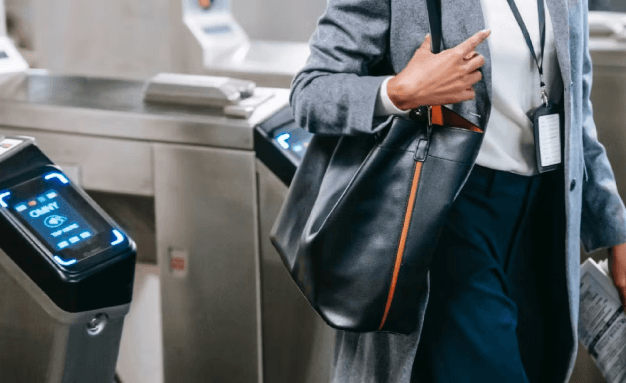You may not have heard of it yet, but Open Payment has already been a part of Londoners' lives since 2014. So what is Open Payment?
OPEN PAYMENT
Open Payment is a concept that is part of a package called Account Based Ticketing. It refers to a way to use public transport and travel without a ticket. Access to these services is no longer anchored in a pass or a ticket purchased at a kiosk. Instead, users can use their payment card, their phone, their connected watch or any other connected object via contactless technology (NFC) to access these services.
This service, which is not so new, has many advantages:
- In France, the amount payable in contactless has increased from €30 to €50 to reinforce barrier gestures. This development has accelerated the growth of contactless payments by 128% from June to September 2020 (vs 74% in 2019)(source: The CB Observatory). Thus, we can see the adoption of this mode of use of payment cards. Open Payment is a continuation of this usage, allowing users to use their payment methods to access public transport directly.
- In line with what we said in the previous argument, the use of the payment card makes the existence of metro tickets unnecessary. If there is no need for tickets, there is no need to buy them or to recharge the card at a terminal: this is a considerable time saving for users.
- Another problem that is being eliminated is the issue of subscriptions to transport services. At the beginning of the pandemic, many people who had paid for a subscription could no longer use it because no one could get out. Of course, refunds were made, but they had to be requested by the users. With free payment, the price is adapted to your use of public transport. With your payment method, you are identified and charged according to your pass, number of trips made, distances traveled and other factors, which guarantees you the best price. It also saves a lot of paperwork, both for the users and for the public transport services.
- As you have already noticed, from time to time ticket machines break down and ticket offices are quickly overwhelmed to get a ticket. This requires maintenance and human resources, and money, to keep the service running. With Open Payment, ticketing machines are no longer needed and ticket offices are no longer overwhelmed. The only maintenance required is for the gates at the public transport entrance. This saves time for the users, but more importantly, it saves money for the transport services.
There are other benefits such as the reduction of fraudulent opportunities or the improvement of the image of the transport services offering innovative tools. Other benefits will emerge as new uses for Open Payment emerge.
HOW DOES IT WORK?
How does Open Payment work? This is a legitimate question that many consumers have a right to ask. Currently, without going into too much detail, information, such as trip and time, is contained in a ticket or pass. It is a closed system, which cannot be used outside the network for which it is intended.
With Open Payment, the user brings his or her payment device close to the door, generating a token. This token contains the user's information and is sent to a back-office server. This information can be the location of the transport access, the date, the time, etc...
Each time the user uses his payment method to pass through a door, a new token is generated and sent to the server. At the end of the day, the collected data is analyzed and a personalized tariff is set up.
WHAT IS THE STATUS OF OPEN PAYMENT?
As you have seen, Open Payment is an innovative service that has many advantages and is dedicated to changing consumer habits. This service has already been implemented in London since 2014. Many cities have followed suit, including Dijon, France, where Open Payment was implemented in March 2018. In 3 months, 170,000 "contactless" trips were made for a population of about 155,000.
Open Payment has taken hold in many countries such as the United States, Japan and Brazil, where residents of Rio de Janeiro no longer need to buy subway tickets. According to a 2019 Masabi survey, 24% of professionals working in transportation agencies said they are researching Open Payment. Another 24% plan to deploy the service.
Open Payment, whether for public transportation or other services, has a bright future ahead. This innovative service will undoubtedly improve the payment experience for consumers.
It is a topic to be followed and will evolve in the coming months. This topic is part of an important issue: simplifying the payment process for consumers. It is essential to accompany users and offer them new and innovative payment methods, while ensuring that those who offer these methods have the means to secure and control their revenues.
As mentioned in the article, Open Payment is set to expand beyond its use for public transportation services, and these are opportunities to watch. By doing so, Market Pay is keeping abreast of developments and will be able to offer innovative solutions.





